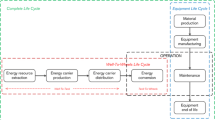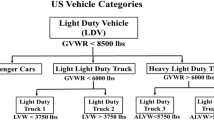Abstract
Introduction
Progress in air and fuel management has greatly increased the efficiency of modern automotive train diesel engines, also achieving significant reductions of pollutant emissions. The increased flexibility of the air and fuel management systems also means a higher number of control parameters and complex interactions between different parameters.
Materials and methods
The task of tuning the engine control parameters to find the right combination to maximize the efficiency and reduce pollutant emissions is referred to as engine calibration. The task of engine calibration for modern automotive diesel engine has become extremely challenging, requiring large amount of time and money to be spent on engine test bench.
Results
The main aim of the study was to test and evaluate driving quality of train diesel engine. For the accessibility study of these issues with regard to the implementation of the engine control approach, level-set approaches were used in this study.
Conclusion
The subject of this test is a diesel engine train. The diesel engine train series with respect to running safety and Adynamic behavior, under the test conditions fulfilled, it meets the prescribed requirements of the standard EN 14363: 2005.






Similar content being viewed by others
References
Scheepmaker GM, Willeboordse HY, Hoogenraad JH, Luijt RS, Goverde RM (2019) Comparing train driving strategies on multiple key performance indicators. J Rail Transp Plann Manag 13:0163
Fernández-Rodríguez A, Fernández-Cardador A, Cucala AP (2018) Balancing energy consumption and risk of delay in high speed trains: a three-objective real-time eco-driving algorithm with fuzzy parameters. Transp Res Part C 95:652–678
Cheng R, Chen D, Cheng B, Zheng S (2017) Intelligent driving methods based on expert knowledge and online optimization for high-speed trains. Expert Syst Appl 87:228–239
Fernandez-Rodriguez A, Fernández-Cardador A, Cucala AP (2018) Real time eco-driving of high speed trains by simulation-based dynamic multi-objective optimization. Simul Model Pract Theory 84:50–68
Naweed A (2014) Investigations into the skills of modern and traditional train driving. Appl Ergon 45(3):462–470
Kozina A, Radica G, Nižetić S (2020) Analysis of methods towards reduction of harmful pollutants from diesel engines. J Clean Prod 262:121105
Domínguez-Sáez A, Rattá GA, Barrios CC (2018) Prediction of exhaust emission in transient conditions of a diesel engine fueled with animal fat using artificial neural network and symbolic regression. Energy 149:675–683
Nikzadfar K, Shamekhi AH (2019) Investigating a new model-based calibration procedure for optimizing the emissions and performance of a turbocharged diesel engine. Fuel 242:455–469
Kakati D, Roy S, Banerjee R (2019) Development of an artificial neural network based virtual sensing platform for the simultaneous prediction of emission-performance-stability parameters of a diesel engine operating in dual fuel mode with port injected methanol. Energy Convers Manag 184:488–509
Osher S, Sethian JA (1988) Fronts propagating with curvature-dependent speed: algorithms based on Hamilton-Jacobi formulations. J Comput Phys 79(1):12–49
Losasso F, Fedkiw R, Osher S (2006) Spatially adaptive techniques for level set methods and incompressible flow. Comput Fluids 35(10):995–1010
Gibou F, Fedkiw R, Osher S (2018) A review of level-set methods and some recent applications. J Comput Phys 353:82–109
Osher S, Fedkiw RP (2001) Level set methods: an overview and some recent results. J Comput Phys 169(2):463–502
Sethian JA, Smereka P (2003) Level set methods for fluid interfaces. Annu Rev Fluid Mech 35(1):341–372
Chopp DL (2009) Another look at velocity extensions in the level set method. SIAM J Sci Comput 31(5):3255–3273
Ovsyannikov A, Sabelnikov V, Gorokhovski M (2012) A new level set equation and its numerical assessments. In: Proceedings of the Summer Program. 2012. Center for Turbulence Research
Enright D, Losasso F, Fedkiw R (2005) A fast and accurate semi-Lagrangian particle level set method. Comput Struct 83(6–7):479–490
Olsson E, Kreiss G (2005) A conservative level set method for two phase flow. J Comput Phys 210(1):225–246
Olsson E, Kreiss G, Zahedi S (2007) A conservative level set method for two phase flow II. J Comput Phys 225(1):785–807
Author information
Authors and Affiliations
Corresponding author
Additional information
Publisher's Note
Springer Nature remains neutral with regard to jurisdictional claims in published maps and institutional affiliations.
Rights and permissions
About this article
Cite this article
Stojicic, S., Milovančević, M., Milčić, D. et al. Optimization of Train Diesel Engine for Maximizing Efficiency and Driving Quality Using Modified Parameterized Level-Set Method. J. Vib. Eng. Technol. 11, 43–52 (2023). https://doi.org/10.1007/s42417-022-00557-1
Received:
Revised:
Accepted:
Published:
Issue Date:
DOI: https://doi.org/10.1007/s42417-022-00557-1




